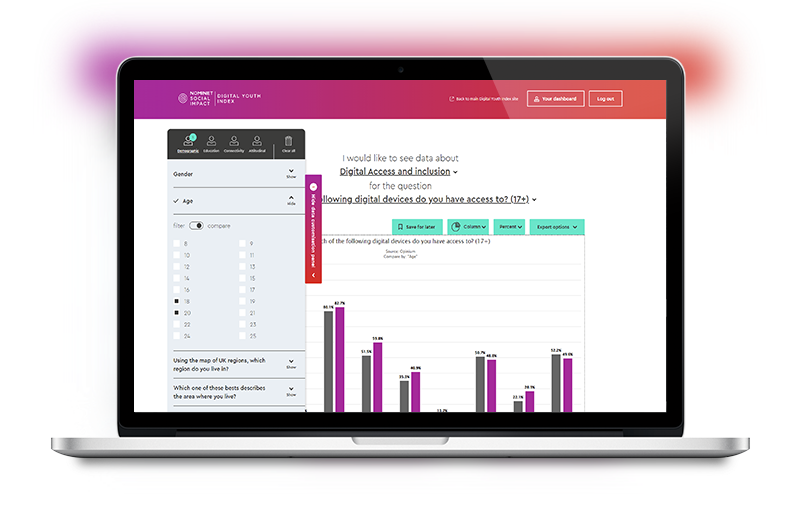A fantastic summary of key points affecting the digital resilience of children and young people across a vast area of society.
The research makes clear that the key themes affecting the digital resilience of children and young people are not isolated, they intertwine with each other at every level. Each theme is exasperated by another, for example, access to devices and connectivity is aggravated by poverty which in turn affects a person’s physical and mental well-being. This is echoed in my work with The National House Project and the support we provide to Care Leavers transitioning in to independent living across the country.
The BARS framework* is on point and takes in to account the breadth of impact that technology has on young people’s lives which, to date, no tool has done so which provides the digital youth index with proof of necessity.
Digital society is continually evolving as are the needs of young people, the digital youth index needs to have flexibility to evolve but also maintain its framework to ensure validity across its time frame.
Young people see connectivity as an essential requirement for everyday living, just like gas and electricity. Furthermore, young people living independently prioritise connectivity over anything else. A recent campaign from young people I support in Care Leavers National Movement enforces this, stating “Internet access is not a luxury it is essential”.
Interestingly, the research suggests that there is an assumption that some young people are digital natives and others are castaways, a breakdown of the demographics in each of these categories would be interesting and create a more focused approach to resource distribution. In my experiences, young people who have been encouraged to positively engage with digital devices throughout their time in care are much more confident when accessing the digital world at the point of transition to independent living, contributing to a more connected and sustainable start to their independence.
Another key point that the research makes is that not only are devices and connectivity dictated, to a degree by your social class but also the reliability and functionality of the connection. An unreliable internet connection can often set a young person up to fail and in my experience deters young people from accessing services. Care leavers living independently at 18 are more likely to have a poorer internet connection to other young people of the same age, largely due to the limited expendable income that care leavers have. Suggesting that young people aged 18 competing for jobs/experiences/opportunities are not starting on the same level playing field as their peers, driving the negative statistics that surround care leavers such as unemployment.
My final point to make is that young people’s first port of call for advice and guidance is often family, but it is also important to recognize that many young people don’t have this option. Through my work, it is clear that care leavers generally reach out for guidance from online resources as a first port of call. Connectivity for care leavers is a lifeline, it provides the functional requirement to live independently but also, and equally as important, it provides the emotional support through connectivity to friends, services and family.
*BARS stands for behaviours, attitudes, relationships, and situations and was used in the design of the Index.
The Digital Youth Index measures behaviours and skills that young people have, their attitudes to these skills and satisfaction with technology, the way this plays out and affects their relationships with family, friends and colleagues, and how the role of technology changes in different situations, such as at home, in school, and in the workplace.





